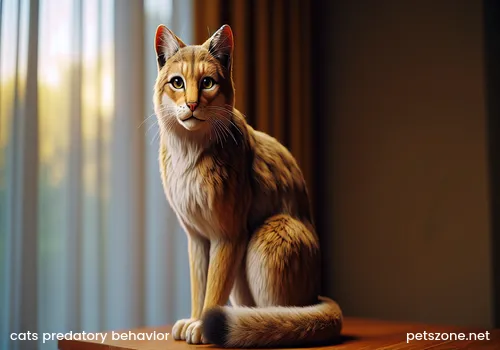Why Do Cats “Play” with Their Prey?
If you have ever owned an outdoor cat, you may have witnessed your feline friend’s predatory instincts in action. When you’re wandering around the yard, your cat suddenly leaps forward, pouncing on a small bird or mouse, maybe a lizard. The feline plays with this creature for several minutes, batting it around long after it has stopped moving. Then, they pick up their prize and trot to the front door, placing a tiny carcass on the welcome mat.

For cat owners, this behavior proves their furball is adorable, even if a misguided goof. But for many conservationists, it is the act of a four-limbed invasive killing machine. This difference in perception sparks heated debates between conservationists and cat lovers about whether cats should be allowed outdoors.
But why do house cats continue to play with their prey long after it has died? Are they cute himbos or furry serial killers? The truth lies somewhere in between.
To answer this question, we need to look at cat domestication. According to a 2017 study published in Nature Ecology & Evolution (opens in a new tab), the first wildcats tentatively stepping toward domestication likely did so about 8,000 years ago in Egypt and surrounding areas. These cats were members of the species Felis silvestris lybica, also known as African wildcats, attracted to cities by the mice they hunted. In turn, humans kept these cats around because they controlled disease-spreading and grain-eating rodents’ populations. In some societies, such as ancient Egypt and China, these feline companions were considered lucky and even revered.
Martina Cecchetti, a conservation scientist studying cat behavior at the University of Exeter in the UK, told Live Science, “Although we have lived with our cat companions for thousands of years, ‘true’ cat domestication only dates back about 200 years.” Cecchetti clarified that in this context, “true” domestication means being selectively and intentionally bred by humans, rather than simply coexisting with our species.
According to a 2006 study published in the Journal of Nutrition (opens in a new tab), because they were recently domesticated, cats have retained many instincts from their wild ancestors, hunting small prey all day long. Cecchetti said this evolutionary remnant prompts cats to “catch prey even when not hungry.” More importantly, a cat’s play instincts, such as batting, pouncing, and pawing, all derive from hunting behavior. Wild cats often play with their prey to tire it out before eating, which reduces the risk of injury to the cat. According to Boston’s NPR station WBUR, due to these instincts, even modern domestic cat breeds can relatively easily survive in the wild—some populations in Poland have been very successful and are now considered invasive pests.
Studies show letting house cats roam outdoors causes serious environmental damage. A 2013 study in Nature Communications (opens in a new tab) estimated that in the U.S. alone, up to 1.3 billion birds and 6.3 billion small mammals are killed by cats annually, most caused by the country’s 30-80 million unowned cats, including farm cats, feral cats, and humans fed strays.
-1-560x560.webp)


